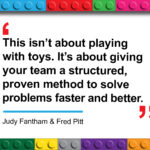“Price and value are not the same”- Warren Buffet
One of the eight factors that contributes to your company’s sellability is your financial performance – not surprisingly, your current revenue and profitability along with your expected and “provable” growth.
Upon completing the Value Builder questionnaire available from The Osborne Group, you will receive a Value Builder Assessment Score out of 100. The questionnaire is part of a system developed by internationally recognized small business expert John Warrillow. Your answers will help determine what drives up, or undermines, your company’s value. The questionnaire takes just 15 minutes to complete online and will generate a detailed report that an Osborne Group Certified Value Builder will review with you during a complementary two-hour meeting.
Your financial performance score will demonstrate how your business is performing while also providing a list of improvements that you can leverage to maximize the value of your company.
A potential acquirer evaluates buying a business as paying today for a stream of profits in the future, which is why companies are generally bought and sold using a multiple of earnings. However, focusing on your multiple is a little bit like a hypertensive person focusing on his or her blood pressure report. To really understand the number – and to move it up or down – you have to understand the calculations.
The Math Behind Your Multiple:
Buyers acquiring a company will usually assess what they are willing to pay today for the rights to a business’s future profits. We’ve all made a similar calculation in personal investing. For example, you may have decided in the past to invest $1,000 in a bond that offers five percent interest per year; that is, you decided to spend $1,000 on something that would be worth $1,050 a year later.
To see how this math affects the value of your business, imagine your company expects to generate $1,000,000 in pre-tax profit next year. Buyers looking for a 15 percent return on their money in one year would pay $869,565 ($1,000,000 divided by 1.15) today for $1,000,000 a year from now.
When valuing a business, buyers will typically value not only the next year’s profit, but also all expected profits in the foreseeable future. For every year into the future buyers must wait to get their profits, they will “discount” the future profit you are projecting by the rate of return they expect. For example, if you project your company will generate $1,000,000 of profit per year for the next 10 years, they would “discount” the $1,000,000 by 15 percent for each year they have to wait for their money.
Therefore, an investor looking for a 15 percent return on his or her money would pay $5,018,780 (“present value”) today for a business that he or she expects to generate $1,000,000 a year for the next 10 years.
Finally, a buyer will look at something called “good will” to add to the value of a business. The value of a company’s brand name, solid customer base, good customer relations, good employee relations and any patents or proprietary technology is figured into the calculation.
The Value Builder assessment will evaluate your current state on these factors and with the assistance of the Osborne Group we can help you determine how to best address these to maximize the value of your business.
In our upcoming blogs, we’ll examine other Value Builder factors and their impact on your company’s worth. Follow us here for the series:
http://localhost/osborne/category/osborne-insights-blog/
To find out how your company is performing, click here to take the Value Builder questionnaire: http://www.thevaluebuildersystem.com/osborne-group






